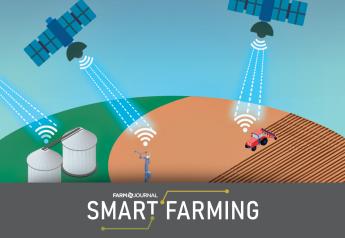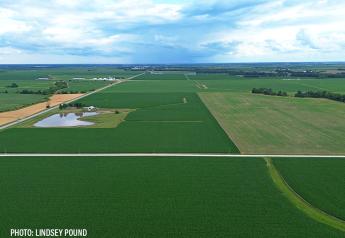The Blockchain Bandwagon Is Ready… Are You?

For those who thought blockchain technology was just another passing fad like mood rings, eight-track tapes and Rubik’s Cubes, think again.
In early October of this year, blockchain technology took quite a big step toward becoming a permanent part of the day-to-day agricultural landscape. That’s because after 18 months of testing, IBM has green-lighted the commercial availability of its food safety blockchain-based platform dubbed IBM Food Trust, which is designed for global use by farms, distributors and retailers.
The system literally digitizes the tracking of food throughout the entire supply chain by tagging each actionable event to an auditable historical record. Using the platform greatly increases traceability and accountability and enables supply chain management to rapidly isolate specific batches and shipments when foodborne illness or contamination is detected.
To date, most of mainstream Midwestern agriculture has been able to largely ignore blockchain’s implications—especially at the grower and retail levels. It was looked on as more concept than reality and more hype than practicality. It was and continues to be a technology surrounded with more questions than answers. And with continued low commodity prices, an escalating trade war with China and rising interest rates, it is no wonder why blockchain hasn’t cracked the top 10 on most corn farmers’ to-do lists.
However, this announcement by IBM may be the tipping point that could very well change all that. Even if production agriculture hasn’t fully jumped on the blockchain bandwagon, some big names in the food chain have. The IBM Food Trust network represents the continuation of more than a year of pilot tests with major retailers and food suppliers including Golden State Foods, McCormick and Company, Nestle, Tyson Foods and Walmart. This group of companies formed a consortium in collaboration with IBM to use its food safety blockchain in order to protect consumers and enhance trust in the consumer food supply.
The Centers for Disease Control and Prevention estimates 48 million people get sick, 128,000 are hospitalized and 3,000 die from foodborne illnesses each year in the U.S. To make a dent in those numbers, IBM used its blockchain pilot companies to build a robust network of members along the entire supply chain that would work in sync with each other to create end-to-end transparency.
Bridget van Kralingen, a senior vice president within IBM Global Industries’ blockchain division, was recently quoted as saying, “The currency of trust today is transparency, and achieving it in the area of food safety happens when responsibility is shared.”
In order for growers and even production agriculture as a whole to achieve such transparency, it is going to have to go digital and go there fast. One agriculture industry official heavily involved in bringing blockchain to market says that if you would look at a clay tablet from the ancient land of Mesopotamia 4,000 years ago, then you can compare it to current grain contracts in North America today. His point is that unfortunately grain marketing and even the recording of activities at the farm level are still much closer to the clay tablets of old than they are to the Amazons or eBays that are now the norm in consumer retail today.
The bottom line is that in order to avoid being the weak link in the food supply’s blockchain system, producers and their immediate suppliers must adopt a well-thought-out and complete digital strategy starting at the farm level.
There is a vision that with the increasing use of sensors and digitization of processes on farms and in the agriculture supply chain, connecting via blockchain will mean less paper, more accuracy and quicker turnaround and traceability from farm to fork. That’s the vision, but the details of that vision must be better communicated at the grower level. What does a blockchain-ready farm actually look like? What exactly needs to be digitized, and how does it actually get linked back to blockchain? Where does one even start in checking the boxes to make your farm a preferred blockchain supplier?
Those are all relevant and urgent questions that need to be answered. Unfortunately, many suppliers and players higher up in the food supply chain wrongfully assume that such digital infrastructure at the grower level is already in place and there is all of this data and a host of digital devices just waiting to be connected. Such assumptions and lack of education and dialogue back down to the grower level will continue to be a major Achilles’ heel in the implementation of blockchain in agriculture until people realize this is not the reality back at the farm. Growers, however, cannot continue to ignore the situation and plead ignorance when it comes to blockchain technology.
Why? Because as of October 2018, when it comes to blockchain, we’re no longer playing preseason games. The regular season for blockchain in agriculture has started, and IBM and its team of food heavyweights are marching down the field. That leads to questions for you. Are you still sitting on the sidelines, or are you ready to play?








